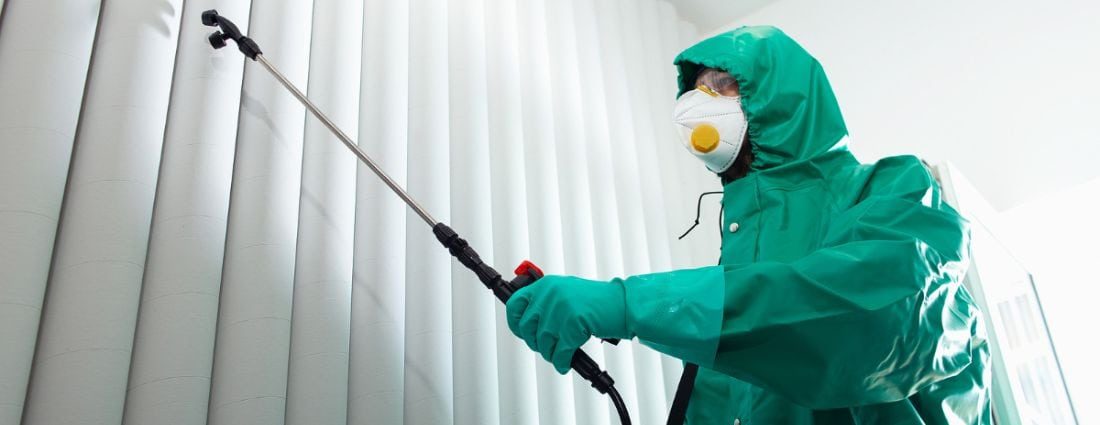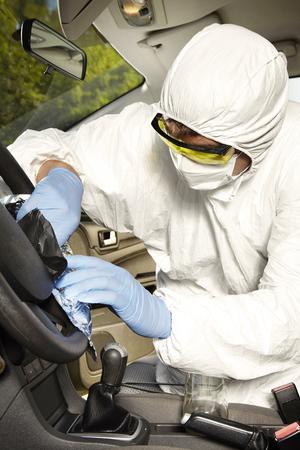Specialist Biohazard Cleaning and Decontamination for Blood, Bodily Fluids, and Hazardous Materials
The potential health and wellness dangers connected with exposure to biohazards highlight the important requirement for meticulous handling and complete cleaning. As we navigate the complex landscape of biohazard cleanup, comprehending the subtleties of policies, conformity, and the customized equipment at play becomes important in ensuring a comprehensive and risk-free purification procedure.
Health Risks of Biohazard Direct Exposure
Direct exposure to biohazards poses considerable health and wellness dangers that can cause severe consequences for neighborhoods and people alike. Biohazards encompass a vast array of biological compounds, including blood, bodily liquids, mold and mildew, germs, viruses, and various other potentially infectious products. When individuals enter into call with these biohazards, whether with accidents, incorrect handling, or environmental exposure, they face the risk of contracting significant ailments or conditions.
One of the key health and wellness risks connected with biohazard exposure is the transmission of infectious diseases. Bloodborne microorganisms such as HIV, hepatitis B and C, and numerous germs can be present in biohazardous materials, positioning a direct danger to human health. Inhaling airborne biohazards like mold spores or entering into call with contaminated surface areas can likewise result in respiratory concerns, allergies, and various other adverse health and wellness effects.
Moreover, biohazard exposure can have long-lasting health implications, with some diseases manifesting years after the initial call (Blood Cleanup). Therefore, it is vital to prioritize appropriate biohazard cleaning and decontamination to mitigate these health threats and guarantee the safety and security of communities and individuals

Specialized Educating for Biohazard Clean-up
When it comes to dealing with biohazard cleanup effectively and securely, specialized training plays a fundamental function in ensuring appropriate decontamination treatments are followed. Biohazard clean-up needs specific understanding and abilities to efficiently minimize threats connected with bloodborne microorganisms, physical liquids, and unsafe products. Professionals learnt biohazard cleanup undertake rigorous instruction on exactly how to securely deal with, remove, and take care of biohazardous materials to avoid contamination and exposure.
Specialized training for biohazard cleanup covers a variety of vital topics, consisting of correct individual safety equipment (PPE) usage, bloodborne pathogen recognition, purification methods, and contaminated materials disposal protocols. People trained in biohazard cleanup are furnished with the essential expertise to analyze contamination levels, identify possible hazards, and apply appropriate clean-up treatments in conformity with governing criteria.
Constant training and education are vital in the area of biohazard cleaning to remain updated on the current decontamination innovations, safety protocols, and laws. By buying specialized training, biohazard clean-up specialists can properly reply to emergency cleanup scenarios and safeguard both public health and wellness and the setting.
Importance of Appropriate Decontamination Strategies
Using proper purification strategies is important in biohazard clean-up to efficiently lessen and eliminate dangerous products health dangers. Effective decontamination not just makes certain the elimination of visible traces of blood, physical liquids, and other biohazards yet additionally targets invisible pathogens that might present major wellness risks if not appropriately eradicated. By following strict decontamination protocols, educated specialists can considerably reduce the threat of direct exposure to dangerous microbes, infections, and germs that could result in illness or image source infections.
Correct decontamination strategies entail making use of specific equipment and disinfectants that are especially developed to reduce the effects of biohazards successfully. Detailed cleaning and sanitation of infected areas are vital to stop the spread of virus and make certain a secure atmosphere for owners. Furthermore, the correct disposal of biohazardous waste following decontamination procedures is crucial in preventing contamination of other surface areas or individuals.

Tools and Devices for Safe Cleaning
The appropriate equipment and devices play an essential duty in guaranteeing the risk-free and efficient clean-up of biohazardous products. When handling blood, physical fluids, or dangerous materials, biohazard cleansing experts count on specialized gear to reduce direct exposure threats and extensively sanitize the damaged area. Individual safety tools (PPE) such as gloves, coveralls, masks, and goggles are important to protect versus direct call with potentially transmittable materials. Additionally, biohazard cleaning kits consisting of disinfectants, absorbent products, and biohazard bags are made use of to securely dispose and consist of of contaminated items. Blood Cleanup.
Advanced cleaning tools like hospital-grade disinfectants, HEPA-filtered vacuums, and fogging makers are utilized to sanitize surfaces and remove biohazards properly. Specialized equipment such as sharps containers and biohazard garbage disposal containers are utilized to securely take care of sharp objects and biohazardous waste products. By making use of the appropriate equipment and devices, biohazard cleansing experts can ensure a comprehensive cleaning process that focuses on safety and security and minimizes wellness threats for both employees and owners of the affected area.
Regulations and Conformity in Biohazard Cleaning
Proper adherence to regulations and compliance requirements is critical in biohazard cleaning to make sure the safety of both workers and the setting. Federal government agencies such as OSHA (Occupational Safety and Health Administration) and the EPA (Environmental Protection Company) have actually top article established specific guidelines for biohazard cleaning procedures to reduce health threats and environmental contamination. These regulations cover an array of facets including the handling, transportation, and disposal of biohazardous products, in addition to the necessary training and protective devices required for personnel included in the cleaning process.
Biohazard cleansing business have to stay updated with these guidelines to assure that their procedures fulfill the required safety requirements. Failing to follow these guidelines can cause severe repercussions, consisting of penalties, lawsuit, and jeopardizing the health of individuals and the setting. By following rigorous policies and compliance measures, biohazard cleaning business can successfully minimize dangers and make sure a comprehensive and risk-free cleaning procedure for all events entailed.
Final Thought
Finally, biohazard cleaning and decontamination need specialized training, proper strategies, and adherence to how to clean up a blood spill osha laws. Direct exposure to blood, physical fluids, and hazardous products presents considerable wellness threats, making it critical to make use of the ideal equipment and devices for safe clean-up. By following stringent methods and guidelines, professionals can successfully reduce the threats related to biohazard direct exposure and ensure the safety and security of both themselves and others.
As we navigate the elaborate landscape of biohazard cleaning, comprehending the subtleties of regulations, compliance, and the customized equipment at play comes to be crucial in making sure a detailed and safe purification process. (Blood Cleanup)
When it comes to dealing with biohazard clean-up effectively and safely, specialized training plays a fundamental function in guaranteeing correct decontamination procedures are complied with.Using correct decontamination methods is crucial in biohazard cleaning to properly minimize and get rid of dangerous materials health dangers. In addition, biohazard cleaning packages having disinfectants, absorbent products, and biohazard bags are made use of to securely dispose and have of infected products.
Government firms such as OSHA (Occupational Security and Wellness Management) and the EPA (Environmental Protection Firm) have actually established particular guidelines for biohazard cleanup procedures to reduce health risks and ecological contamination.